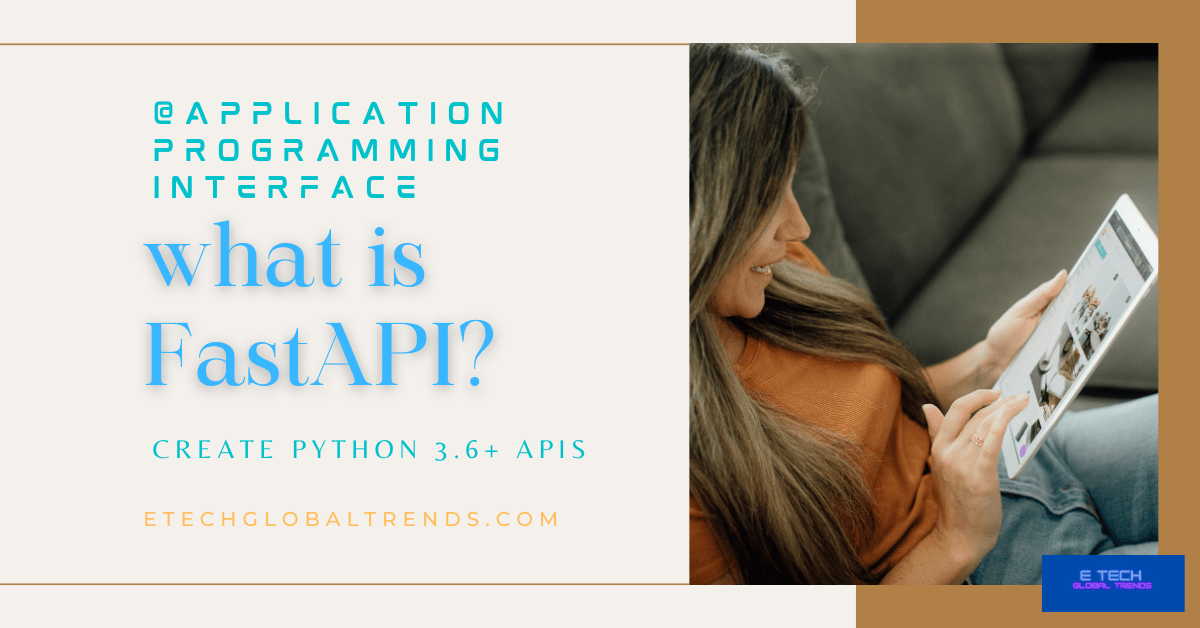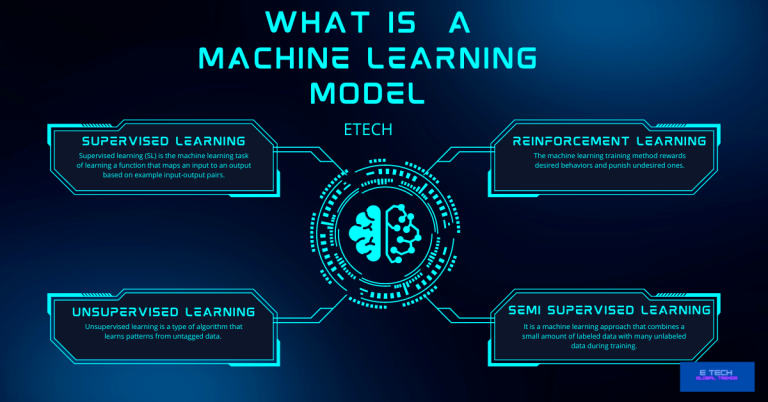FastAPI
Are you curious about APIs? If so, by reading this content you will be impressed. What is FastAPI going to do? a structure for writing APIs. Its main goal is to provide a product that works quickly, but also has an interface that is simple and clear to use. A framework called FastAPI is used to create Python 3.6+ APIs. It is, after Scarlette and Uvicorn, the 3rd-fastest Python web framework.
Actually, one of the primary uses of FastAPI is to create the backends of web applications.
What is API?
Firstly let’s see what is API stands for.
API stands for Application Programming Interface.
An API call is a request made by a computer program to another computer program in order to access its functionality.
It is a collection of guidelines that specify how two software applications can speak to one another.
This makes it possible for many applications to exchange information and features. which may greatly simplify the development and maintenance processes.
The numerous endpoints that offer, as well as the request parameters.
What is the meaning of interface?
Really, there aren’t many differences in the computer definition. The same idea is used just when it comes to electronics, such as in;
- physical interfaces,
- user interfaces, or
- software architecture (for APIs).
An interface barrier exists anywhere two autonomous entities that must communicate do so.
That is to say, Any combination of the following is generally defined via a structured API. right?
a collection of data types and classes, actions you can do on them, local or remote services to handle requests, and ways to allow the implementation to notify the client program of noteworthy occurrences.
In other words, this interface specifies all the many programmatic methods in which your software will communicate with the other software.
for instance, This could be recorded in a few header files (or modules as of C++20) in C++. These headers would include data types, descriptions of significant constants, and declarations of functions and classes.
Additionally, it presumably contains a good deal of the implementation specifics owing to the quirks of C++.
The majority of the implementation is concealed from you in other languages. The implementation specifics are not visible to you. only get to view the declarations for;
- the various data types,
- classes,
- Methods,
- members
etc.
The implementation of API
The implementation should be able to change without affecting your software if you program to a solid interface. Few implementation details should come through if the API designer did a decent job.
Additionally, if you are depending only on the API’s declared assurances rather than unintended implementation-specific idiosyncrasies. you will be oblivious to the rare implementation details that do leak through.
The implementation may be changed or updated thanks to APIs, which abstract away the details. A change in the implementation of an API behind it will inevitably lead to some API clients breaking since all abstractions leak.
It’s basically the same concept, but at the user interface as opposed to the programming interface.
You need access to the interface’s source code if you want to examine the real code—the implementation—behind it. It isn’t yours to see if you don’t really have access to that.
All the way down, so it’s implementations and interfaces. for instance, Even a basic inverter’s specification serves as an interface definition. A transistor or two and some circuitry typically make up the implementation.
Understood?
What is an API?
Application Programming Interface is what it stands for. API uses to provide a communication channel between two pieces of software.
Let’s take an example of typing some information into your phone. This input data is now can send to the server, which processes the data. Then data is possible to send to your phone after processing. Your phone evaluates the data and communicates that interpretation to you.
Through API, everything takes place.
Consequently, this is how API is used. Simple communication aids across various programming interfaces and APIs are essentially codes.
Let’s see a simple example again.
Are you aware of how a laptop’s keyboard and trackpad may be used to operate software when a person is seated at a computer?
A human user of the software isn’t always what you want. You want an additional computer to perform that task. Computers are quicker than humans at handling tedious tasks.
However, a computer lacks hands, eyes, and a brain. Thus, it is unable to utilize the keyboard.
A machine may utilize the software without a keyboard thanks to an API. It provides a means for electronic communication with that software.
Why is FastAPI trending?
There are significant reasons for this platform. The key factors driving the expansion of this framework are its;
- simplicity and quickness.
This is why Netflix employs FastAPI in internal crisis management for this reason.
- On GitHub, the project has more than 52K ratings.
- Within the next 5 years, Python is anticipated to overtake all other programming languages.
- Python’s usage increased by almost 19% over the previous 5 years. making it the 3rd most popular language.
Additionally, Python is currently the most major language in respect of how frequently people look for tutorials on Google.
The main drivers of this trend are;
- how simple they are to learn,
- availability of many applications?
- how many development resources there are.
Who is working on this?
Pyramid and Dash are 2 of the most popular Python web frameworks right now.
1.0 Pyramid Framework
Framework for creating open-source, Python-based web applications. Pyramid Framework,
2.0 Dash Python
This is a Framework for creating interfaces for data visualization that is open source and low-code.
How does FastAPI work?
It is a cutting-edge, high-performance web framework built on Python that use to develop Rest APIs.
Its main advantages include
- speed (up to 300% quicker coding),
- fewer defects,
- ease of use,
- production-friendliness.
The FastAPI’s main objectives are…
- rapidly developing
- Fewer buggers
- high-speed performance
This framework can run with;
is used by organizations like Netflix and Uber and actively supports asynchronous programming (Asynchronous Server Gateway Interface).
- Starlette
- Pydantic
- OpenAPI
- JSON Schema
are all interconnected through the use of FastAPI.
Is that as effective as FastAPI?
Let’s work with a comparison.
How fast is the Python FastAPI in comparison to Node.js frameworks?
Comparison will help you to get more understanding.
Shall we go?
If you look at the FastAPI benchmarks, they make it appear to be on a pair. Other benchmarks often offer Node.js frameworks a little advantage.
However, there are several Node.js frameworks with varying levels of speed. Typically, express.js is brought up. We are talking about the default FastAPI configuration with Starlette because there are other settings available.
Overall, this sort of discrepancy is not substantial since the standards are so far off from actual situations.
Asynchronous queries are what affect performance the most in both cases. Although you may start many instances to use all the cores, they are not truly multi-threaded.
Your caching technique is far more crucial than these minute variations.
Regarding the speed of the languages themselves, node.js is built on the V8 JavaScript interpreter for Google Chrome. The Python interpreter performs worse. However, Python also includes incredibly effective low-level language data manipulation packages.
In the end, the decision is not all that dependent on how well the frameworks perform.
Python is increasingly frequently used for machine learning and data processing.
JavaScript, which is built on Node.js, is the preferred language for traditional applications.
When would you prefer Fast API instead of Django for a web app’s backend?
We suggest a CMS or another software that required a lot of administrative work. So it’s better to pick Django over FastAPI.
because Flask-Admin or other quality backend or admin administration plugins for FastAPI are currently lacking.
There are various plugins available for that, however, they are currently under development.
You can continue using FastAPI if you, the developer, will serve as the site administrator.
However, Django is often the best option for admin interfaces with medium to high complexity.
So when should you use FastAPI?
applications that only need;
- bare-bones admin interfaces.
- IoT initiatives,
- machine learning software,
- data collecting, etc.
In what ways does FastAPI differ from PHP web frameworks?
Let’s compare Laravel or Symphony.
The primary distinction between Laravel and Symphony and FastAPI is that
- Laravel is a so-called full-stack framework
- whereas Symphony is a backend-focused framework.
Both the backend as well as the front end may be realized thanks to them.
However, I don’t see this as a benefit as the front end and the back are becoming more and more separated.
That is why backend tools like FastAPI are still so popular today.
This kind of building offers a number of benefits. The front-end programming is frequently writte using cross-platform frameworks including;
- React or
- Flutter.
- For online,
- mobile, or
- even Mac and Windows clients,
It is essentially the same.
JavaScript-based Apps
JavaScript-based pure front-end applications frequently have better responsiveness. In mixed applications, the server generates and sends HTML pages in response to each request.
The JavaScript code or at least the most important portion of it, loads at site launch in front-end apps created using React, Svelte, and other frameworks, making navigating easier subsequently.
In the end, as more and more web projects create in this manner, frameworks like Laravel & Symphony’s front-end features become less and less helpful.
Benchmark results show that FastAPI is typically a little quicker in terms of performance. The distinctions found in the various benchmarks will be considerably less significant than the effectiveness of the execution or the caching approach employed because these many frameworks all fall into the same category.
Any of these frameworks is the most effective flow if performance is a top priority. It is preferable to have a look at Go frameworks.
The language barrier: how to settle?
Another extremely crucial consideration is the fact that various frameworks do not speak the same language. Choosing one framework over another frequently motivates this.
In the majority of situations,
for instance, the developer’s experience will be the first deciding factor. Unless he is fluent in two languages or desires to learn another. We both agree that learning a new language—especially a really high-level language like;
- Python or
- PHP
is considerably simpler than you may imagine when you already know one.
In addition to the framework itself, you will likely employ a variety of other tools. and these tools do not treat the 2 languages equally.
They have a totally distinct ecology.
The main purpose of PHP is the web, where it was created. Its online ecology is therefore excellent.
but when we try to add recommendation algorithms and predictive models, we will immediately run into problems.
Furthermore, in these situations, we frequently wind up separating these algorithms and coding them in distinct Python containers.
In the web front end, Python is substantially less advanced.
However, there’s a good probability that JavaScript will handle this portion,
so it’s not that important.
Python has a highly sophisticated web backend.
Additionally, it is the top language across all categories. therefore there are sufficient resources for all subjects.
Still, what is better for web Apps?
Web applications continue to dominate by PHP. due in a major measure to its past. When faced with the decision to use PHP or Java, it was common practice to pick the latter when the task at hand was straightforward.
Then came the Ruby on Rails movement, followed by the Node.js & Python trend.
This caused PHP to lose market share.
Although there is a lot to consider, starting with a CMS might be intriguing if you are creating rather traditional websites.
Furthermore, by using PHP to write the majority of well-known CMS. consistently for the same antecedents. we assume in particular WordPress, which powers over 40% of all websites.
It is a significant market!
but we are getting closer to integrating already-available solutions and occasionally developing plug-ins.
Why does Python better for AI integrations?
Python is the one that is more frequent use for applications that need to be more complex, particularly when AI and data processing are crucial.
for instance, Quora and Instagram are both use in Python, and Django is a framework that is more seasoned than FastAPI.
Yes, there are optimization challenges with the usage of Python on these kinds of large-scale projects, but these are complex issues too. but it’s possible with this technology.
Go is an alternative to Julia when operations on huge volumes of data or even the complexity of computations are difficult, and Elixir is when the volume of request flows, particularly for chat apps, is the issue.
Performance difficulties can solve with;
- Julia,
- Go, or
- Elixir.
Finally, it is crucial to mention that serverless technology is using more and more in the rapidly evolving backends of online applications.
With Google Firebase in the forefront, which at this time only supports TypeScript and JavaScript. Although Amplify, the AWS equivalent, is more adaptable in this regard, it still primarily utilizes JavaScript.
The developer’s experience and the functional requirements are the two main factors that determine the optimal solution. being aware that services may always be divided and made to operate in separate containers themselves using APIs…
Do web apps work well with FastAPI?
Absolutely, FastAPI is appropriate for web apps. But if you’re developing solid, well-documented Python API services? I’d definitely suggest it.
Summary
So, now you know why FastAPI is better than other applications.
Hope this long comparison helps.
Cheers!
Read more on related topics;web3 platform, Type dream- no code website builder








Great information shared.. really enjoyed reading this post thank you author for sharing this post .. appreciated